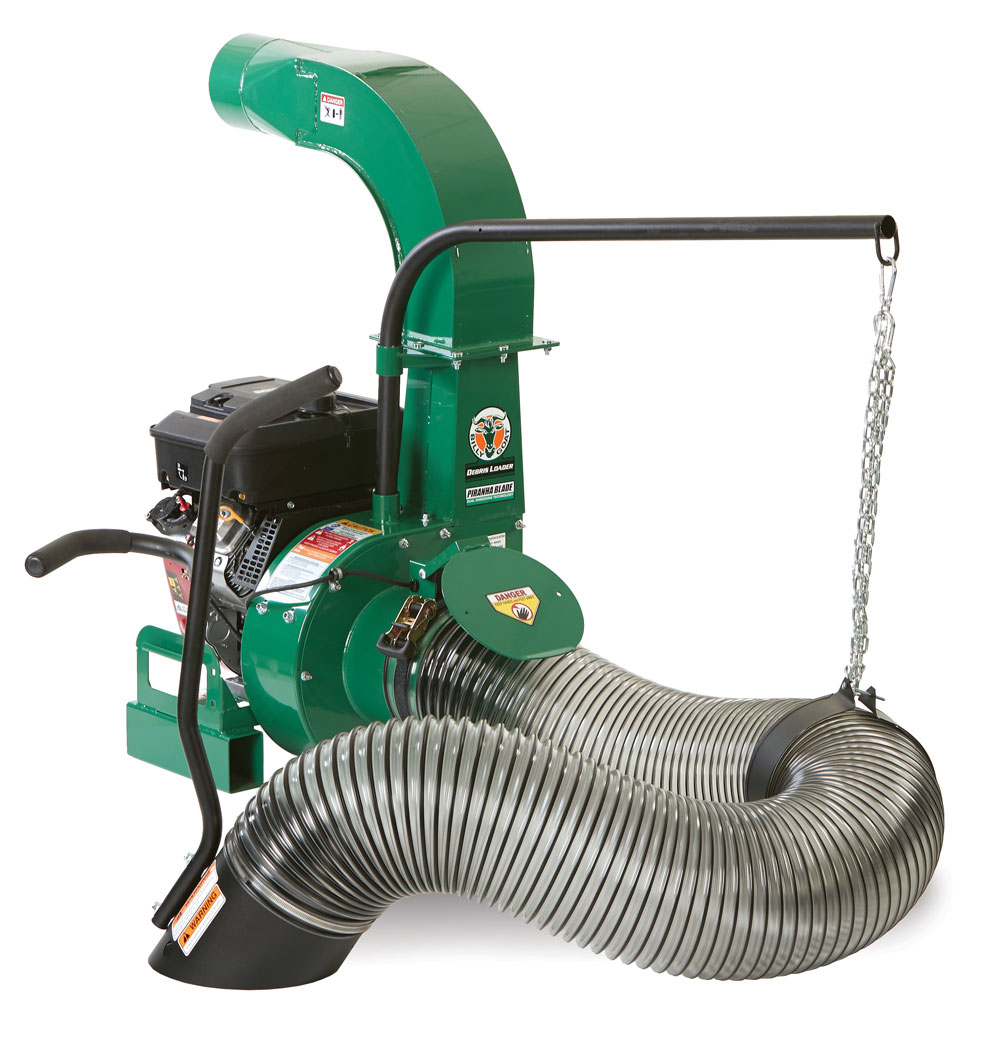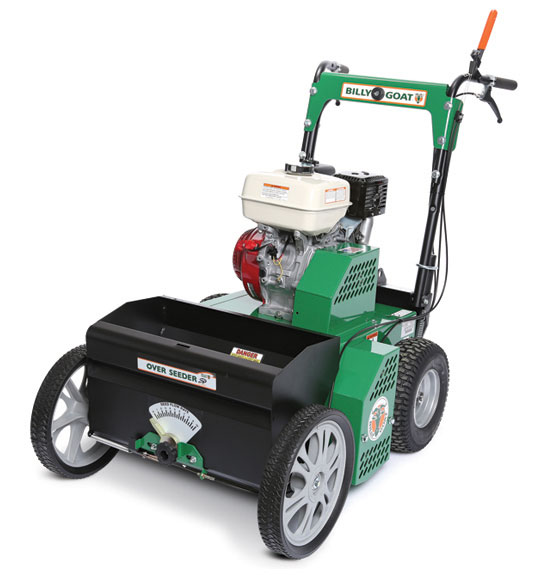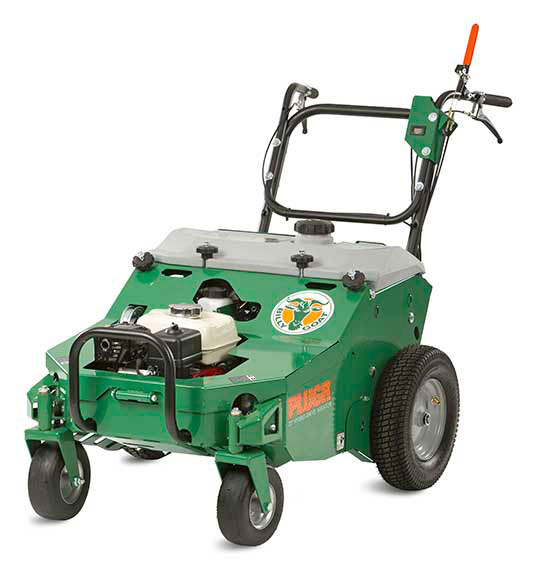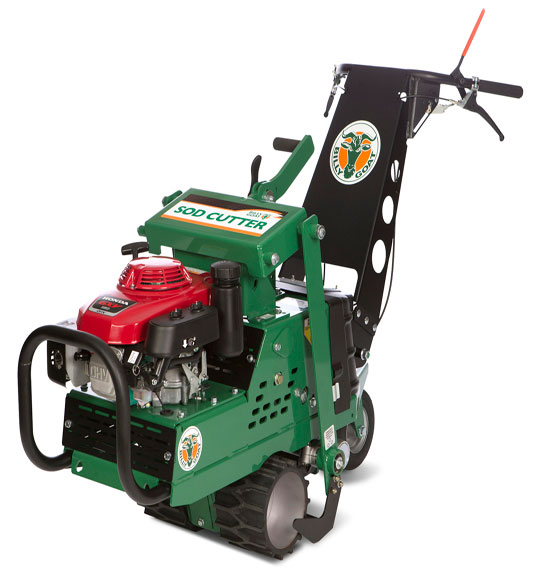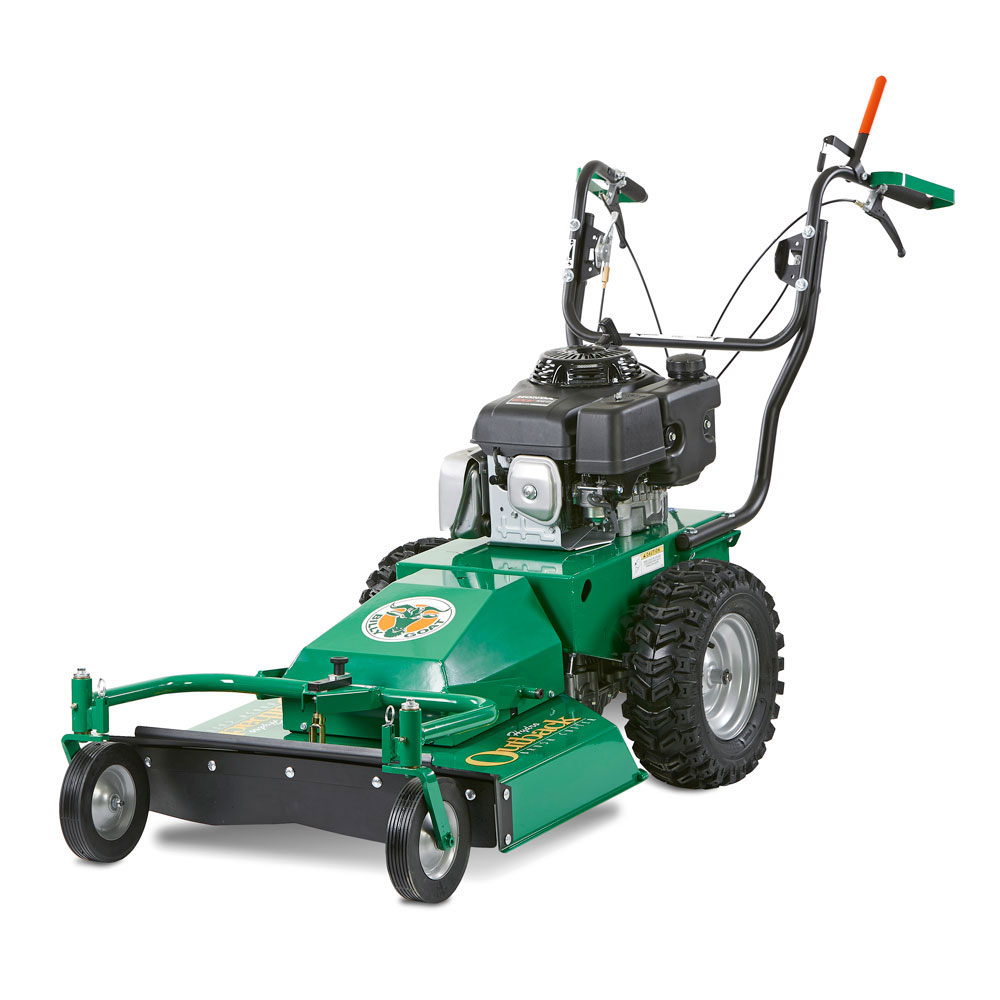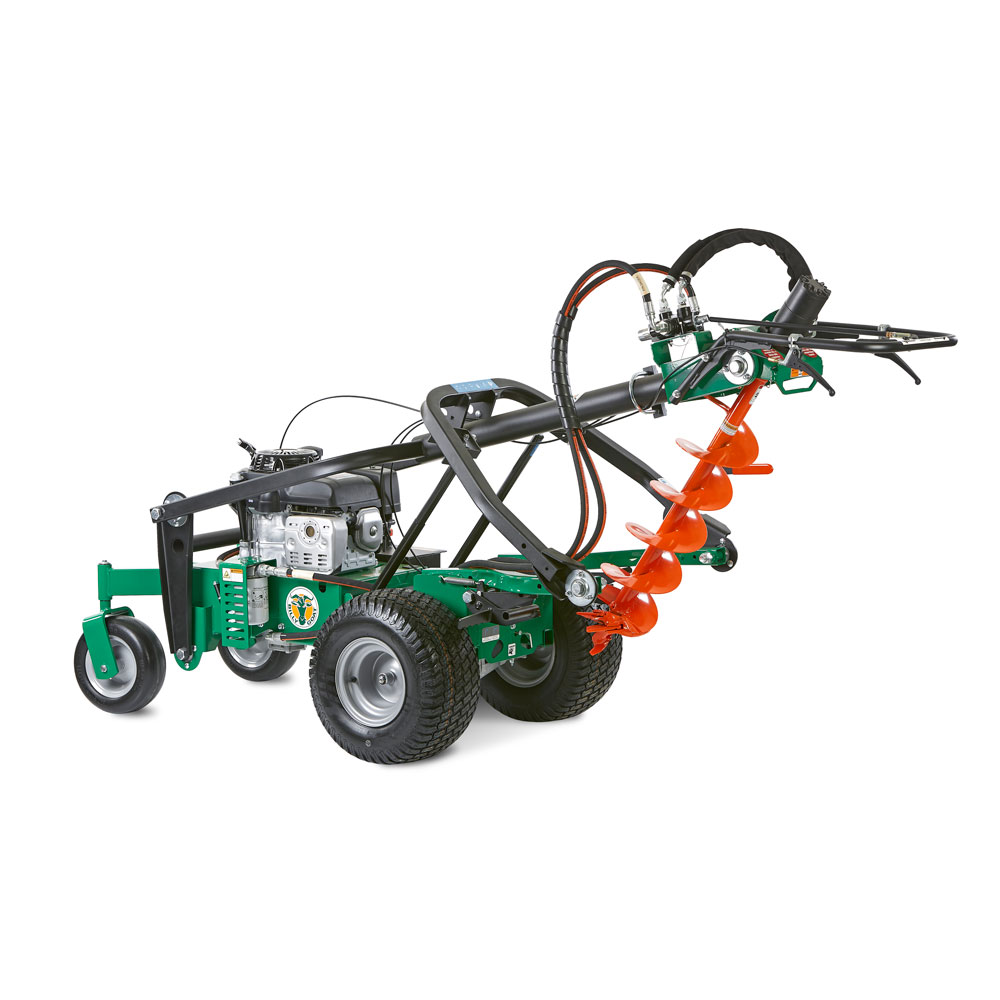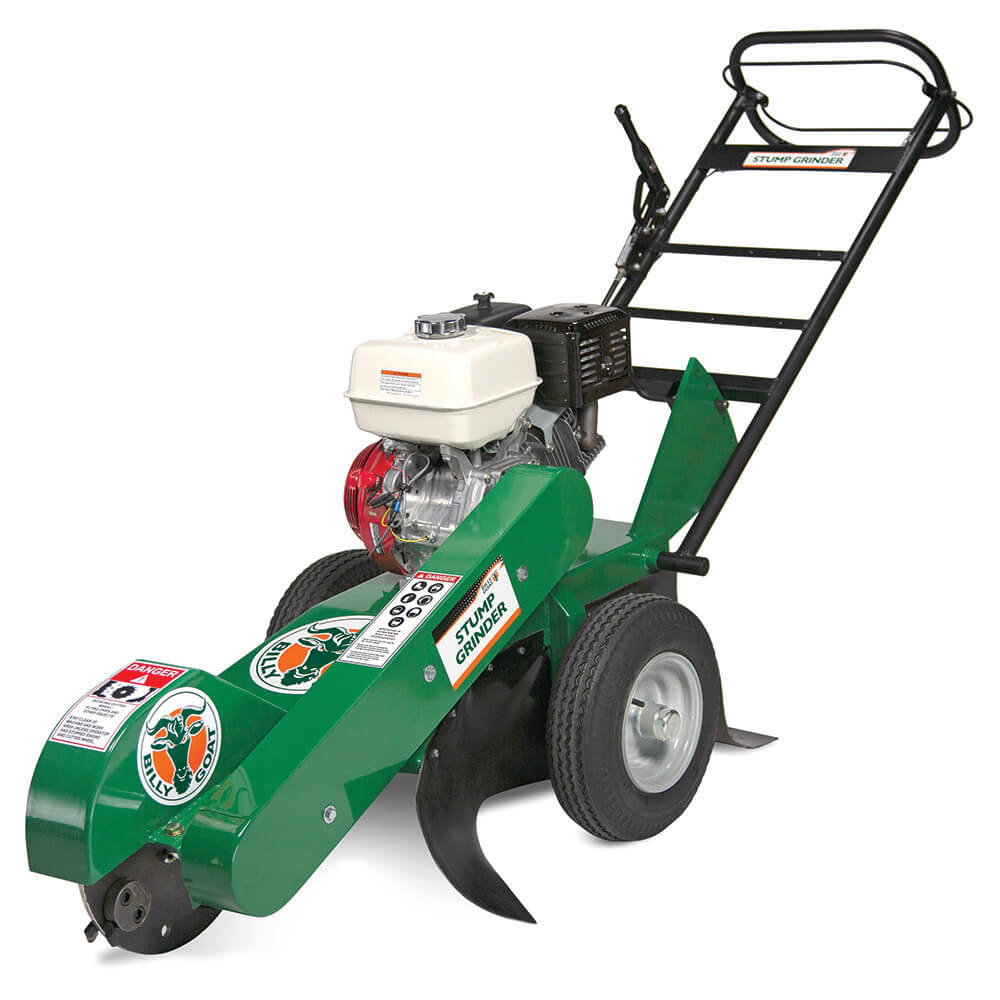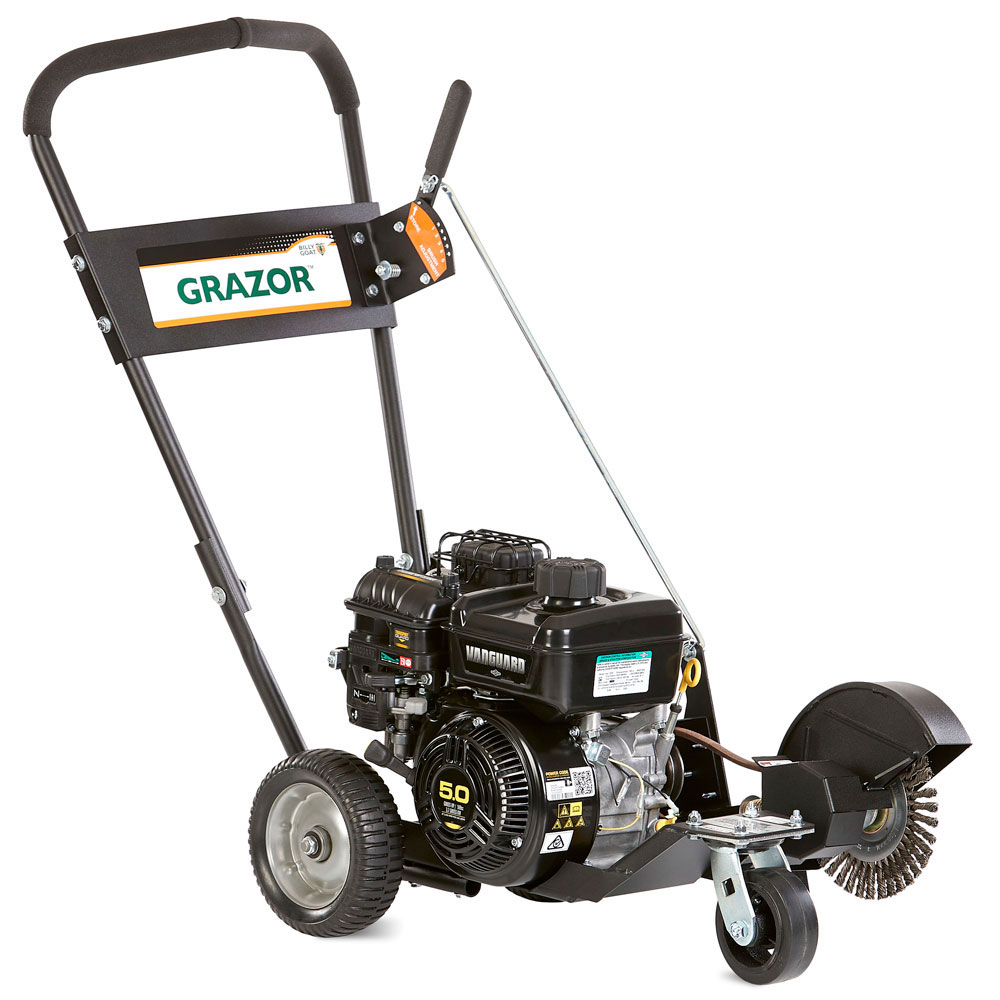OS500 Series Push Overseeder
What type of lawn preperation is necessary prior to overseeding?
First, mow your lawn at the lowest setting on your mower. For best results, power rake to remove thatch from the lawn. If you plan on fertilizing your lawn, do so with a broadcast or drop spreader prior to overseeding. It is important not to water prior to seeding.
How can I get the best results from overseeding?
Always overseed in two passes at ½ the application rate for your selected seed at right angles or in a crisscross pattern. (Drop rate settings are under the seed box lid. A Scotts cross-reference is provided for your benefit.) Water heavily immediately, then lightly for 10 –14 days, keeping soil moist. After germination, water less often to promote root growth.
When is the best time to overseed?
It is best to overseed in the autumn when weed seed has difficulty germinating. Warm days and cool nights with frequent watering will produce the best results. Generally speaking, you want to overseed when no less than three weeks to the date of first freeze occurs.
I'm confused, should I power rake or aerate?
Power raking and aerating are not substitutes for each other though lawns do experience some common benefits. Power raking removes excess organic debris from the lawn. Aerating is meant to reduce soil compaction and improve grass root development.
What is thatch?
Thatch is a layer of semi-decomposed grass and other organic material that accumulates above the soil faster than it can be absorbed. Thatch build-up is a normal occurrence and is not necessarily harmful to the lawn until it gets too thick. Poor mulching mower performance can be a big contributor to thatch build-up.
Why should I worry about thatch?
Thatch forms a barrier between soil and the water, nutrients, and air required for a healthy lawn. It may also serve as a perfect breeding ground for damaging lawn diseases.
How can I tell if I need to power rake?
If thatch is more than ½ thick, you should consider power raking. Take a core sample of grass and soil from your lawn. Measure the organic material sitting on the surface of the soil. It should not exceed ½”. Check several areas of your lawn, as build-up can be irregular.
When should I power rake?
For cool season grasses, power raking is recommended in early fall or spring. Warm season grasses are better power raked in late spring to early summer. Because power raking does damage some healthy grass, it is important to power rake with enough growing season left for your lawn to recover. At least 30 days of growing season should be available following power raking for successful results.
How do I get the best results from the power rake?
Soil should be moist, but not too wet. If the soil is too wet the grass could pull away. Best results are achieved when working in two directions. Adjust the depth of the flails under the machine so that they make contact with and remove thatch. The flails should not make contact with the soil. Rake up thatch immediately or use the Billy Goat KV or MV vacuum to make quick work of cleanup.


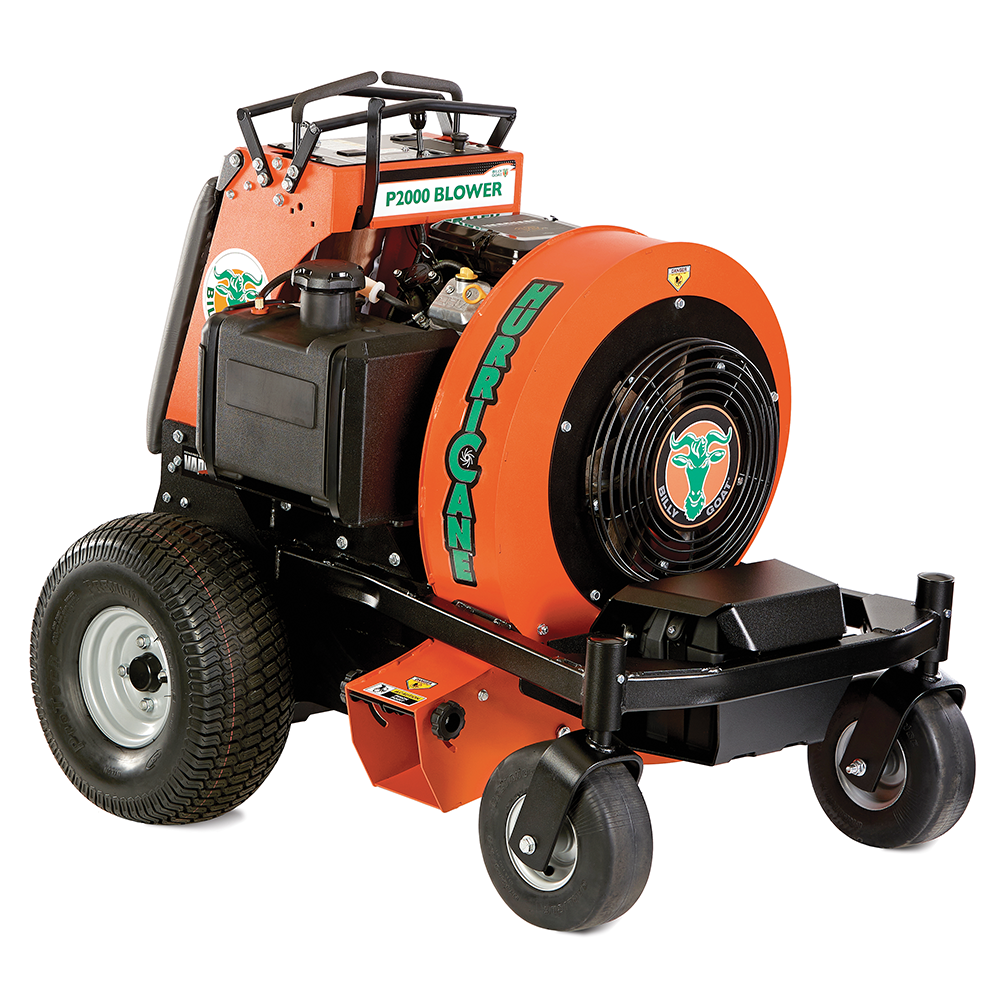
.jpg)
